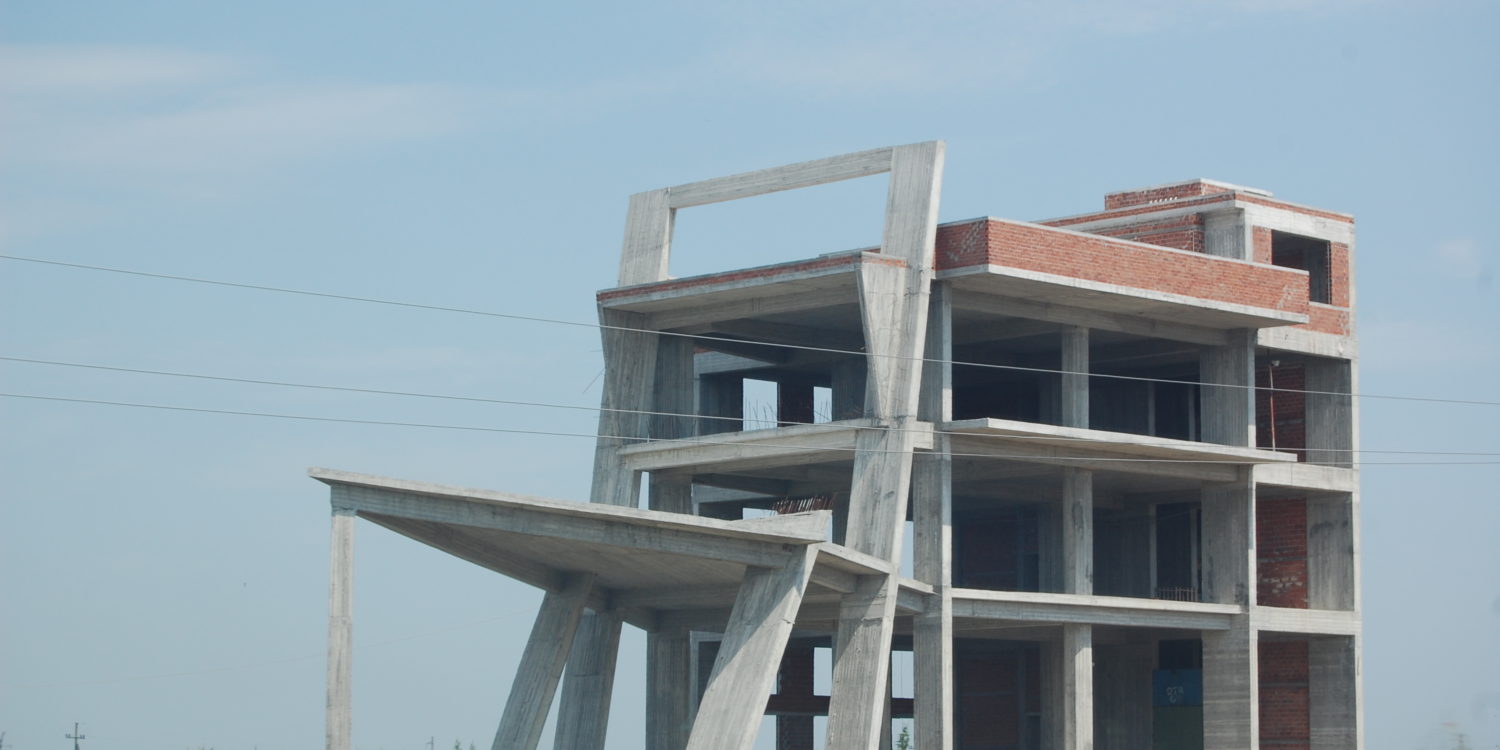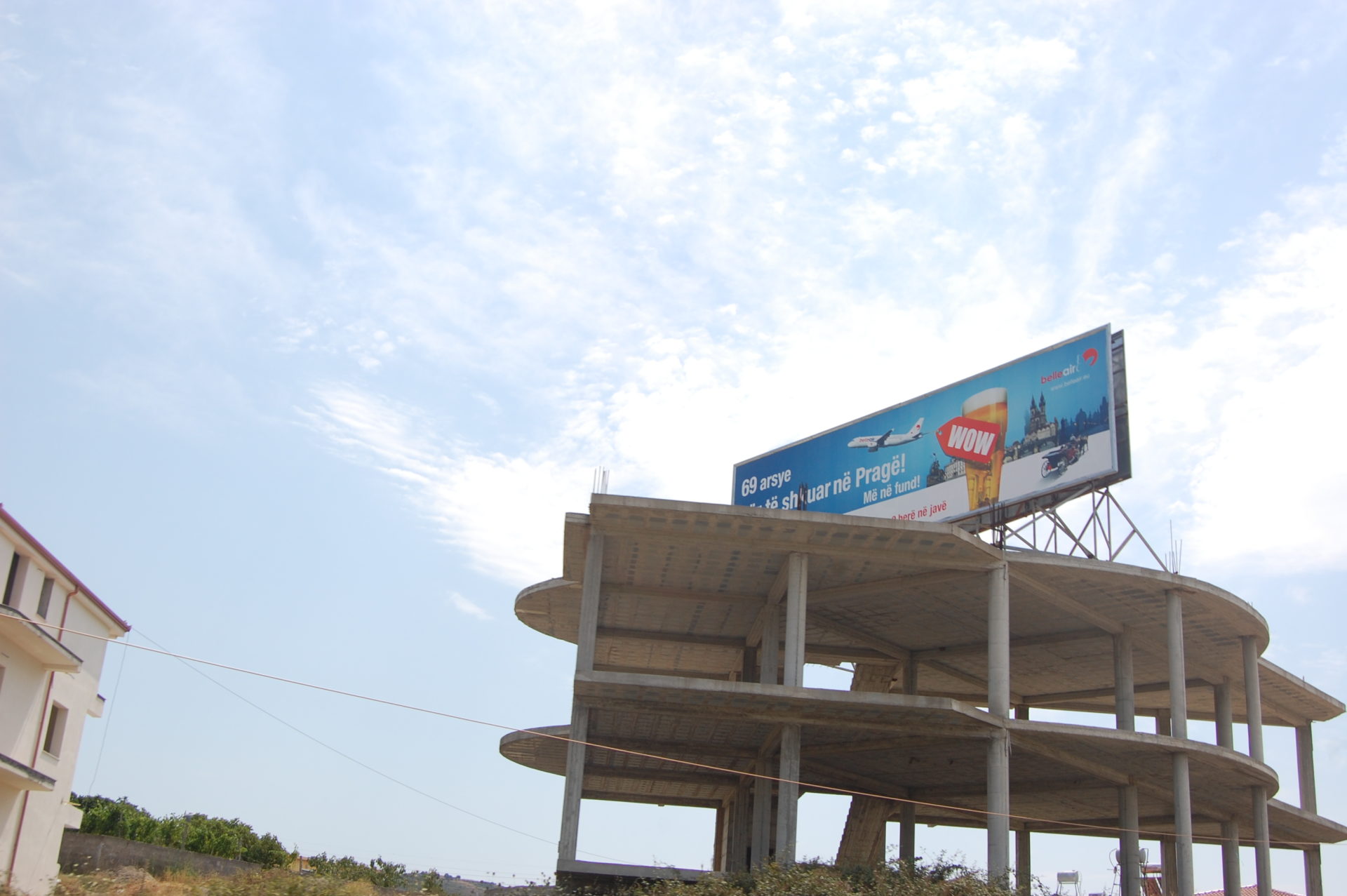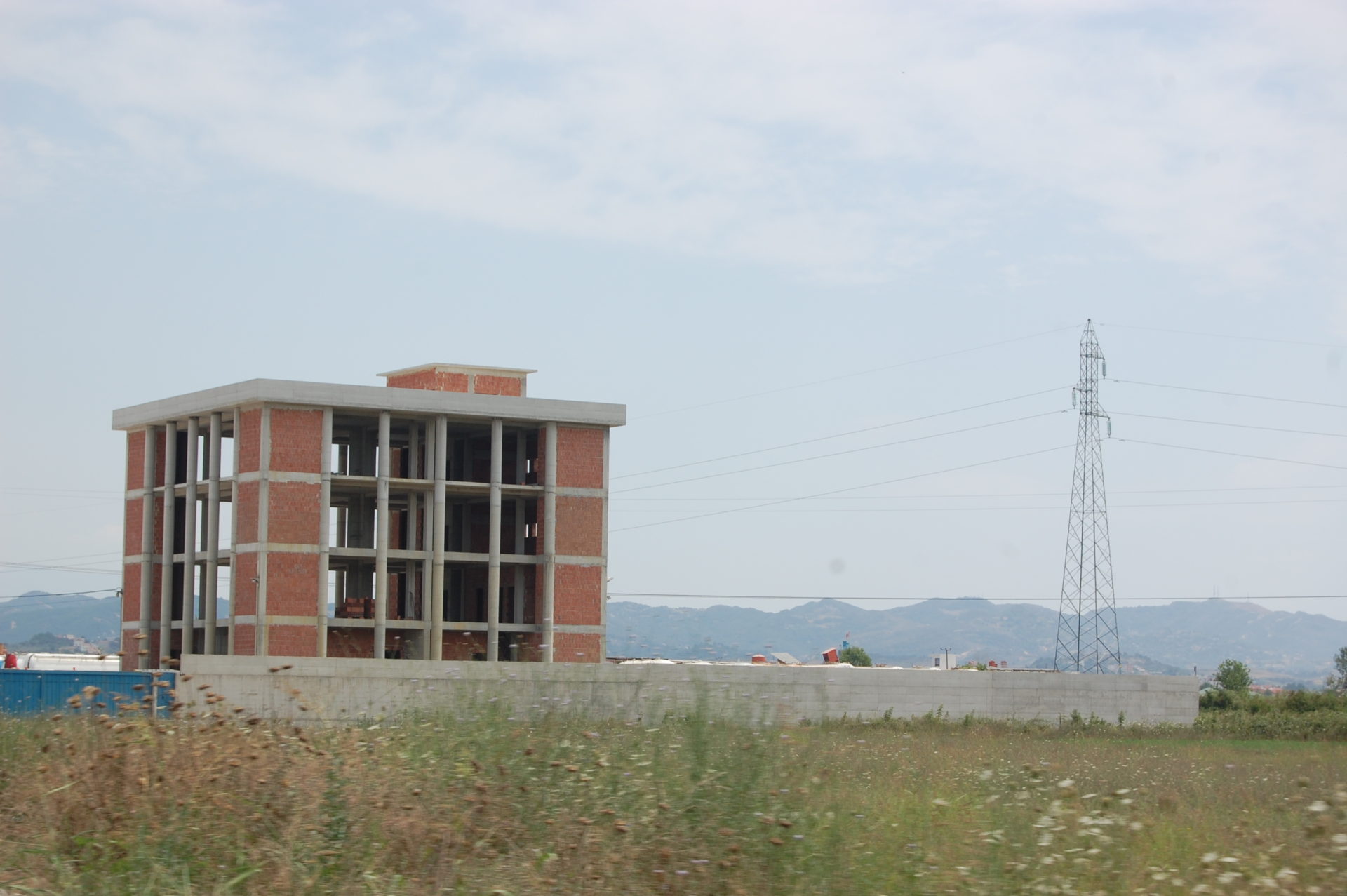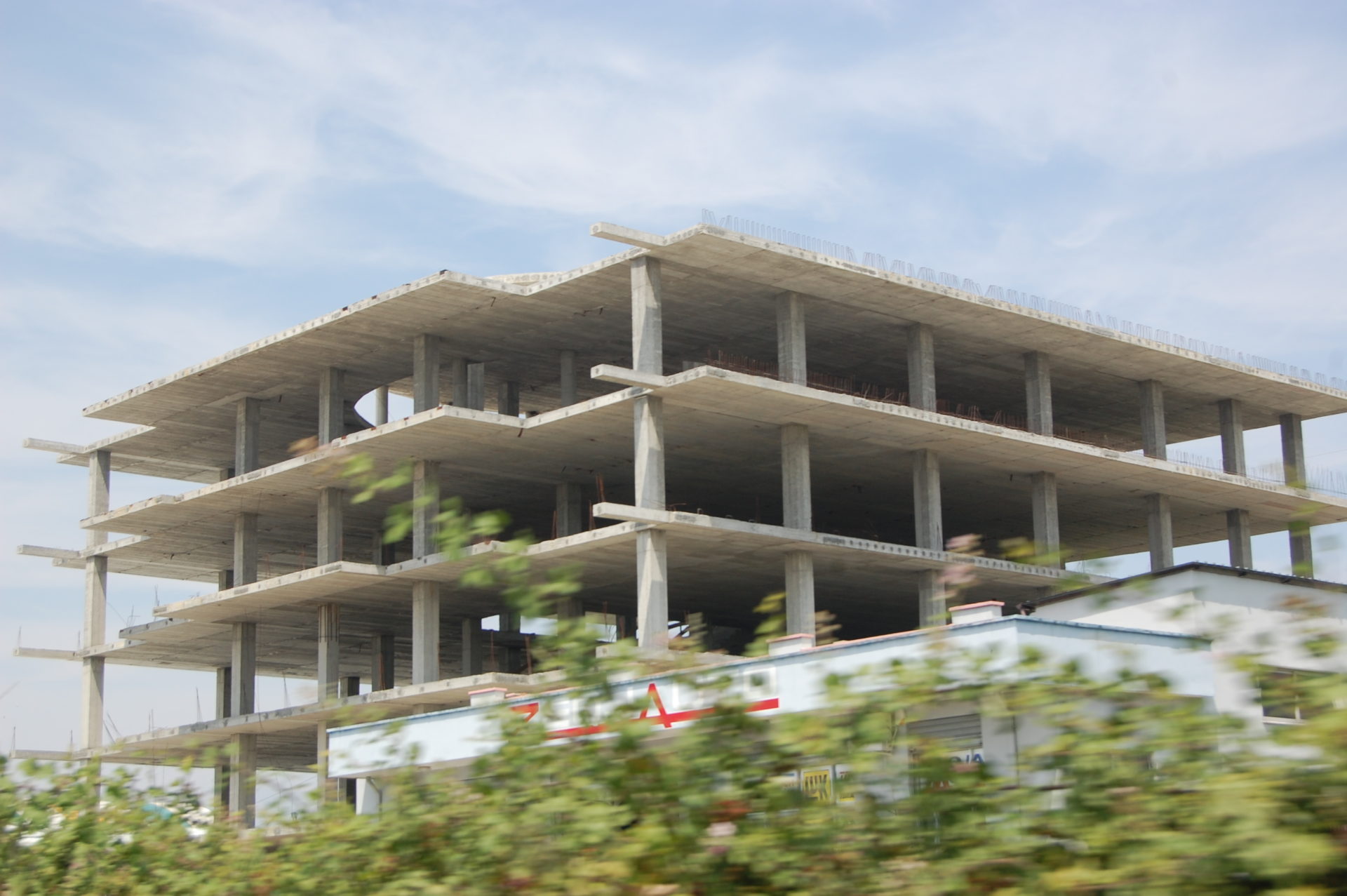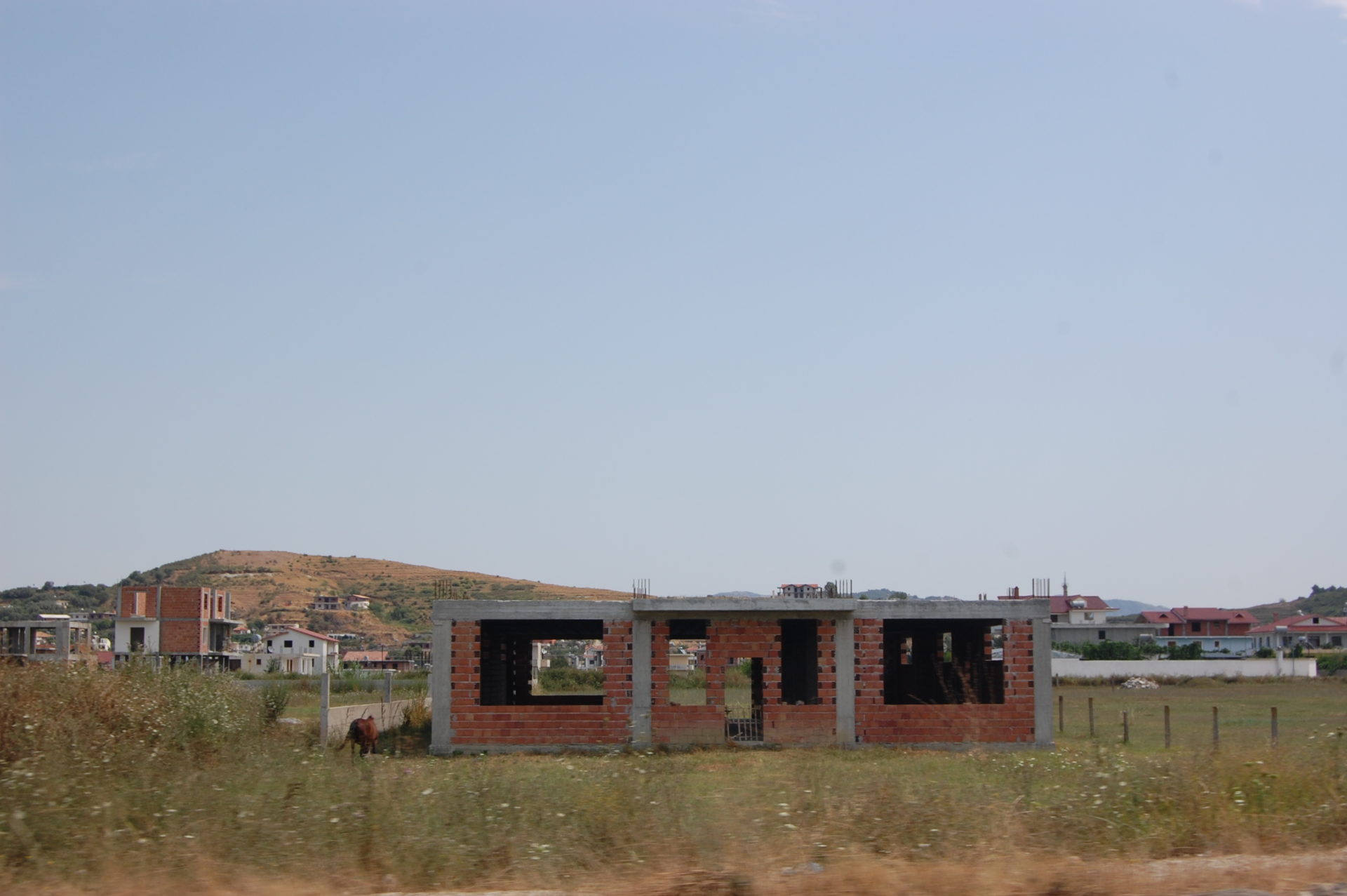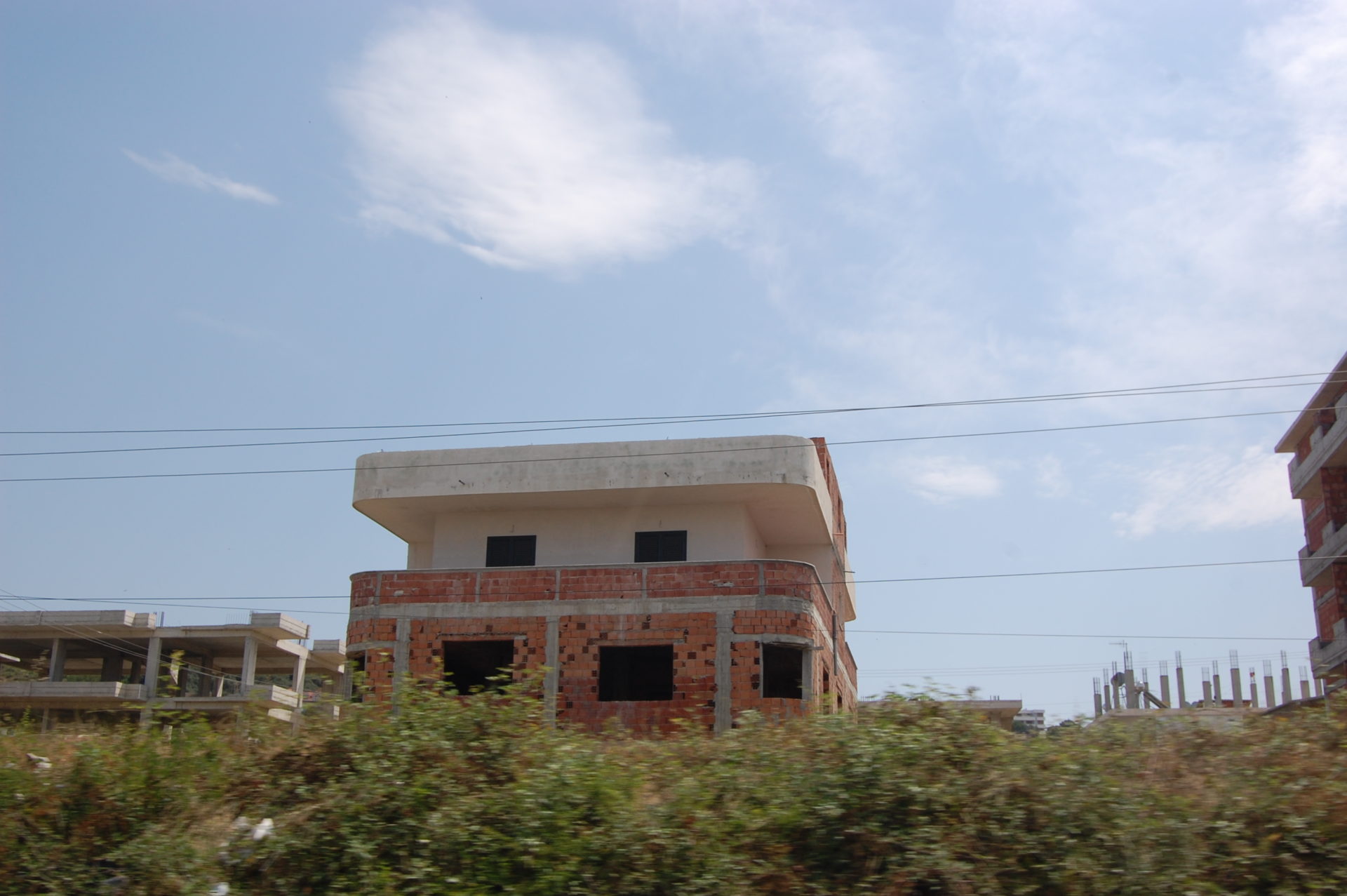Traveling through Albania, from Shkoder to Vlore, the rules of the road (or lack thereof) did not inspire a lot of confidence. Roundabouts appeared without notice. Donkeys, baby carriages, and old ladies wove in and out of fast moving cars. And a third, unmarked traffic lane mysteriously appeared in the centre of the highway. To combat the fear induced by this ‘organized chaos’, I fixed my gaze out the passenger window to the landscape. A curious pattern emerged: scattered unfinished buildings appeared every couple of hundred metres along the highway. A parade of cadaverous structures. Some of them were inhabited, others completely unused, and others still under construction.
A little research revealed the reasons for this unusual epidemic. Many of the concrete skeletons date from the 90s, when a series of nationwide pyramid schemes created a building boom that left many constructions incomplete. In the mid-1990s Albania was transitioning from a state-controlled economy to a capitalist market economy. The relative naiveté of Albanians in the face of large-scale financial investment led to a speculative mania, wherein many invested in what turned out to be pyramid schemes: companies without assets attracting investors by offering high returns.
After the fall of Communism in Albania in 1991, there was a lack of government regulation accompanying the introduction of private property: it became a kind of free-for-all. Based on their presumed riches, Albanians began constructing across the country. In 1996-97, at the peak of the pyramid schemes, the nominal value of the schemes’ liabilities amounted to half of the country’s GDP.
The architectural effects of this economic situation meant that construction took place in informal and de-regulated arenas, and often involved clever methods for circumventing further economic ruin. This had far-reaching outcomes.
In the post-communist period, new developments were built without much government intervention, using an informal method of land distribution and construction. Through these informal processes, ‘the poorest households were able to build significant real assets’.
Furthermore, some sources have suggested that when the construction of a building remained unfinished, usual property taxation laws could not yet be applied. Many people inhabited the first floor of a building, leaving the top floors in a constant state of construction, in order to avoid taxation. Given the social prestige of owning large-scale private property, construction has also tended to take place incrementally when there is money available, with long stretches between building periods. These unfinished buildings represent long-term investments, with the idea that they would grow over the years to accommodate more family members or to serve as intergenerational inheritance.
While the phenomenon of unfinished buildings is prevalent across the Balkan region, Albania is a particularly stark case study. The post-transition economy of the country created immense political turmoil, leading to widespread civil unrest and the death of nearly 2,000 Albanians in 1997. Though much has changed since that time, the vestiges are still visible on the landscape, not least in the procession of unfinished structures. Whether these relics amount to failure from an architectural standpoint is open to interpretation: through informal means, people have claimed or re-claimed many of these structures for alternative uses, testifying to the communal creativity born of economic devastation and state failure.
